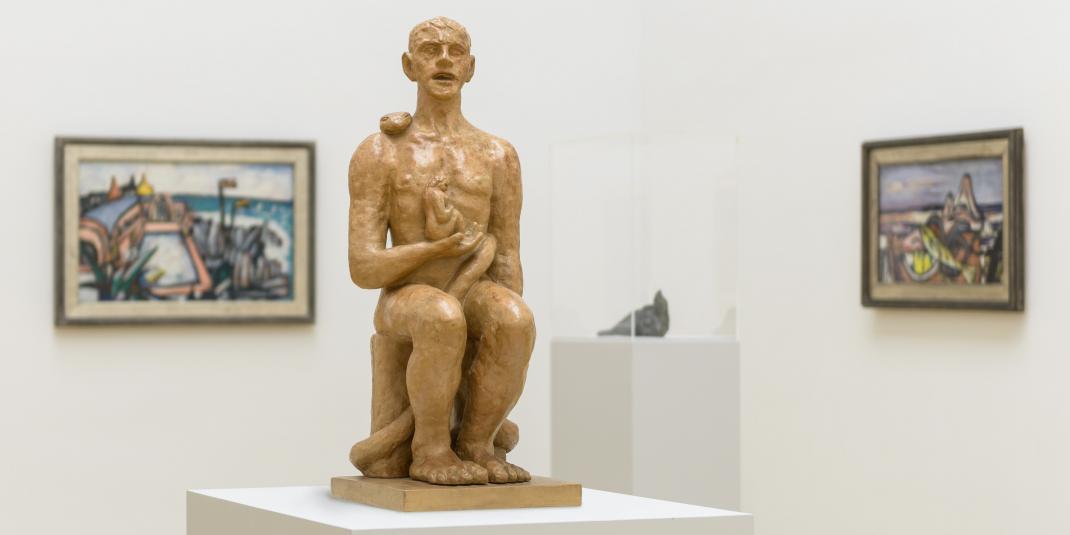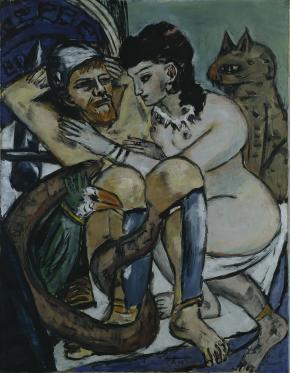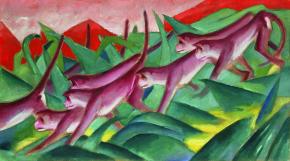
Modern Art
Important groups of works and outstanding single objects characterise the Modern Art collection, which has among the most important holdings in Germany. The department, which includes all the paintings and sculptures produced from 1900 to 1960, looks back on an eventful history. The first director of the Kunsthalle, Alfred Lichtwark, was only hesitantly committed to post-Impressionist painting. By contrast, his successor from 1914 onwards, Gustav Pauli, increasingly acquired the art of his contemporaries: He not only secured for the museum a series of central works but also established permanent exhibition spaces for modern art. After Pauli was dismissed, nearly the entire holdings of modern painting were seized by the National Socialists in 1937 and were forever lost to the institution. Carl Georg Heise, who assumed the office of director in 1945, worked with impressive success to close this wound through acquisitions and to rehabilitate the art that had once been defamed. From 1955 onwards, Alfred Hentzen continued to round out the collection of modern art by adding important works, already with an eye to the contemporaneous art of his day. Since the 1970s supplementary acquisitions but also gifts and bequests have successively expanded its holdings. As was already the case in Pauli’s day, permanent loans from private collections continue to strengthen the Department of Modern Art.
Numerous facets of German and international modernism in painting and sculpture unfold at the Kunsthalle: paintings by the Brücke (Bridge) artists and the École de Paris as well as groups of works by Edvard Munch, Wilhelm Lehmbruck, Paula Modersohn-Becker, Lovis Corinth, and Max Beckmann illustrate the new era from 1900 onwards. The art of the Bauhaus, Neue Sachlichkeit (New Objectivity), and Surrealism as well as various trends in abstract and nonobjective painting lead up to the mid-twentieth century and put an impressive face on a few intense decades.
With the reopening of the museum in the spring of 2016, the Gallery of Modern Art will be presented with new freshness and diversity: the redesigned circuit through its collections illustrates art movements and associations but at the same time focuses attention on individual oeuvres. For example, thanks to important new loans Beckmann is now represented with works from his earliest to his final period. The arrangement also invites visitors to immerse themselves in fundamental phenomena of modern art, including the movement between the poles of figuration and abstraction or to follow the traces of history in painting, such as the catastrophic years around the First World War. The first gallery that greets the visitor to the Hamburger Kunsthalle represents a high point: it is dedicated to the 1950s and presents works from Germany, England, France, Switzerland, and the United States that reveal both deep suffering and faith in freedom and humanity.
The rehanging of the Gallery of Modern Art shows what profoundly characterises this rather brief span in the production of art: the simultaneity of the different, the influential power of ideas across national borders, the opposition to the traditional, the flowering after destruction. As a result, what we call High Modernism remains fascinatingly topical and continues to pose a challenge to our seeing and thinking.













